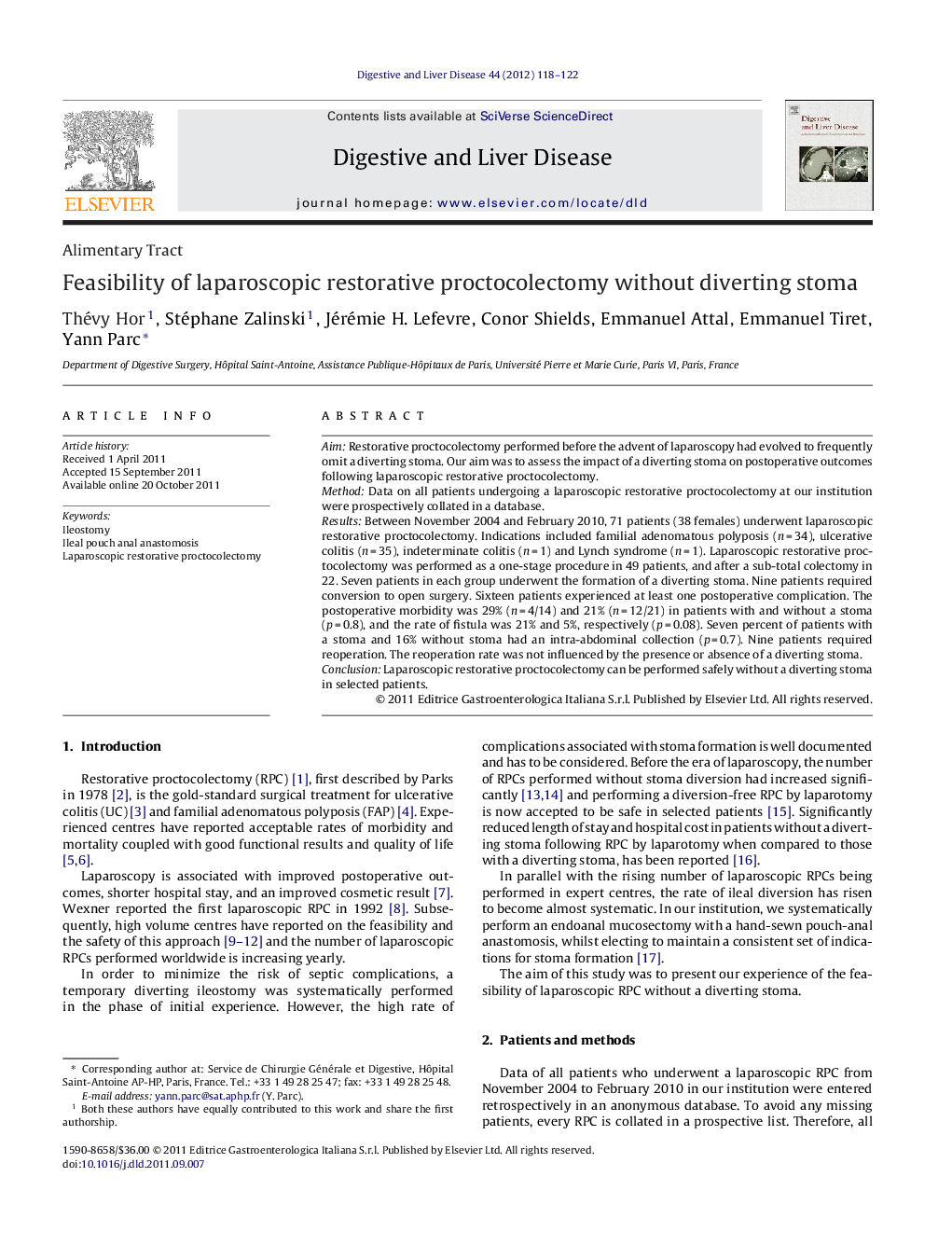| Article ID | Journal | Published Year | Pages | File Type |
|---|---|---|---|---|
| 3263219 | Digestive and Liver Disease | 2012 | 5 Pages |
AimRestorative proctocolectomy performed before the advent of laparoscopy had evolved to frequently omit a diverting stoma. Our aim was to assess the impact of a diverting stoma on postoperative outcomes following laparoscopic restorative proctocolectomy.MethodData on all patients undergoing a laparoscopic restorative proctocolectomy at our institution were prospectively collated in a database.ResultsBetween November 2004 and February 2010, 71 patients (38 females) underwent laparoscopic restorative proctocolectomy. Indications included familial adenomatous polyposis (n = 34), ulcerative colitis (n = 35), indeterminate colitis (n = 1) and Lynch syndrome (n = 1). Laparoscopic restorative proctocolectomy was performed as a one-stage procedure in 49 patients, and after a sub-total colectomy in 22. Seven patients in each group underwent the formation of a diverting stoma. Nine patients required conversion to open surgery. Sixteen patients experienced at least one postoperative complication. The postoperative morbidity was 29% (n = 4/14) and 21% (n = 12/21) in patients with and without a stoma (p = 0.8), and the rate of fistula was 21% and 5%, respectively (p = 0.08). Seven percent of patients with a stoma and 16% without stoma had an intra-abdominal collection (p = 0.7). Nine patients required reoperation. The reoperation rate was not influenced by the presence or absence of a diverting stoma.ConclusionLaparoscopic restorative proctocolectomy can be performed safely without a diverting stoma in selected patients.
